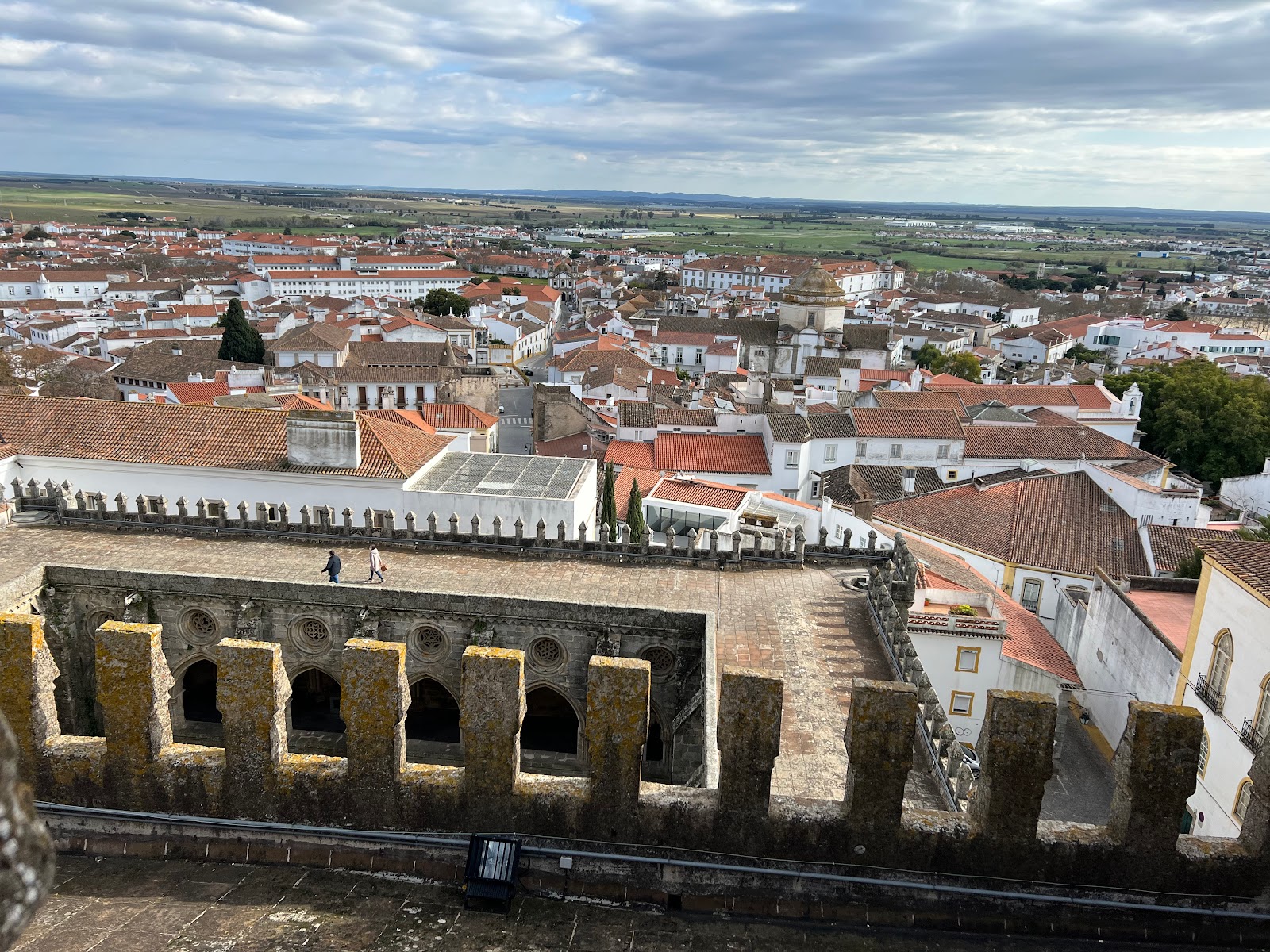A First Look at Evora
It took me 4 hours and three espressos to make it to Evora today from Porto. I can report success with the taxi negotiations yesterday, as the taxi arrived at the exact time right at my door and helped me handle my luggage.
I left Porto via the bridge closest to the ocean and the view from way up there was gorgeous. But of course I could only glance that way. Putting aside the length, the drive was easy and there was little traffic once I left Porto.
Needing to stretch out after being in the car, I took a walk around Evora and toured the Cathedral of Evora this afternoon. The town is beautiful! It's pretty much all white buildings with yellow/gold trim and it's got a lot of stores and restaurants. There's a few very large public squares with a lot of cafes. But to get the lay of the land, I went straight up a corkscrew staircase to the top of the tower of the Cathedral. From there, you can see that beyond the town, there's a vast expanse of green where there's wine country and cork harvesting going on. I have to explore that while I'm here!
Opposite those ancient doors, there's a chapel that has on its keystone arch, a griddle -- the one that features in the story of Saint Lawrence, which was told in painted tile in the chapel in Almancil that I saw a couple of weeks ago (he was wrongly accused of keeping the king's money for his own gain and punished by being burned on a griddle).








Comments
Post a Comment